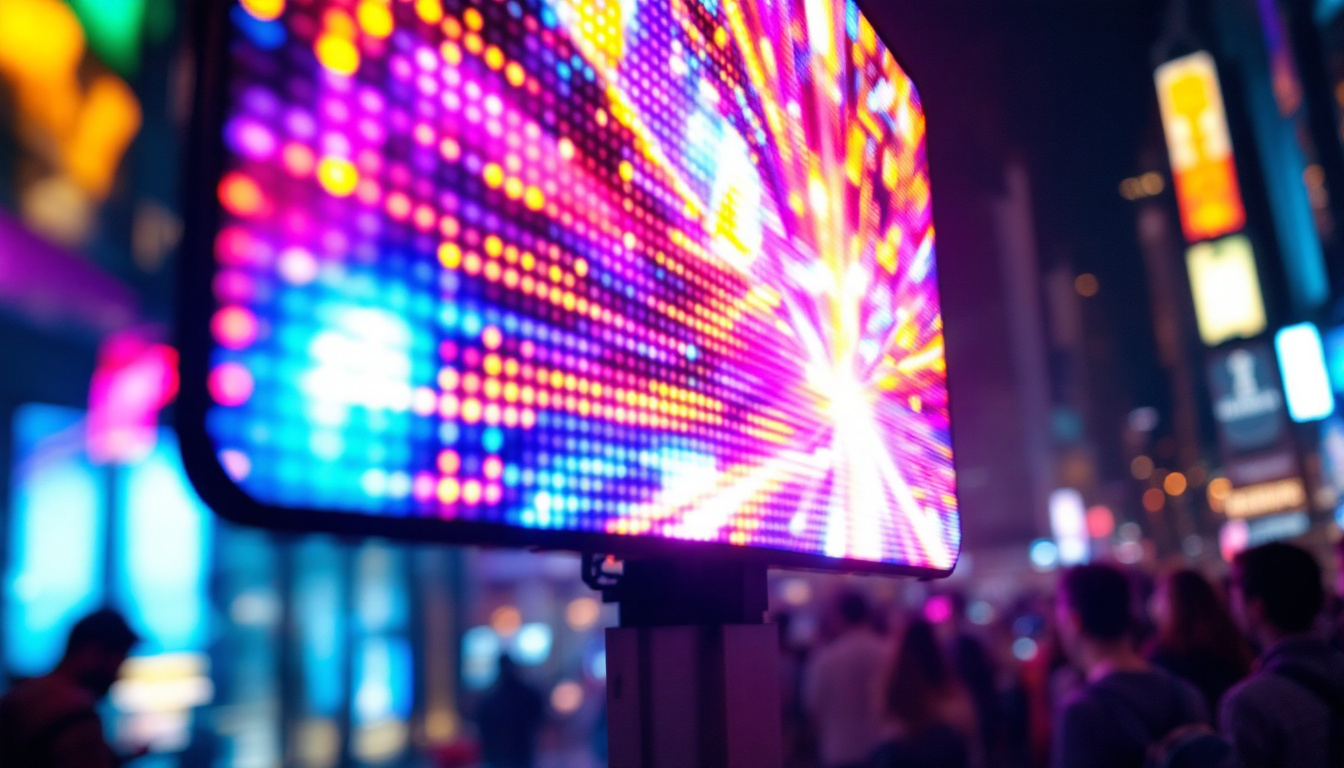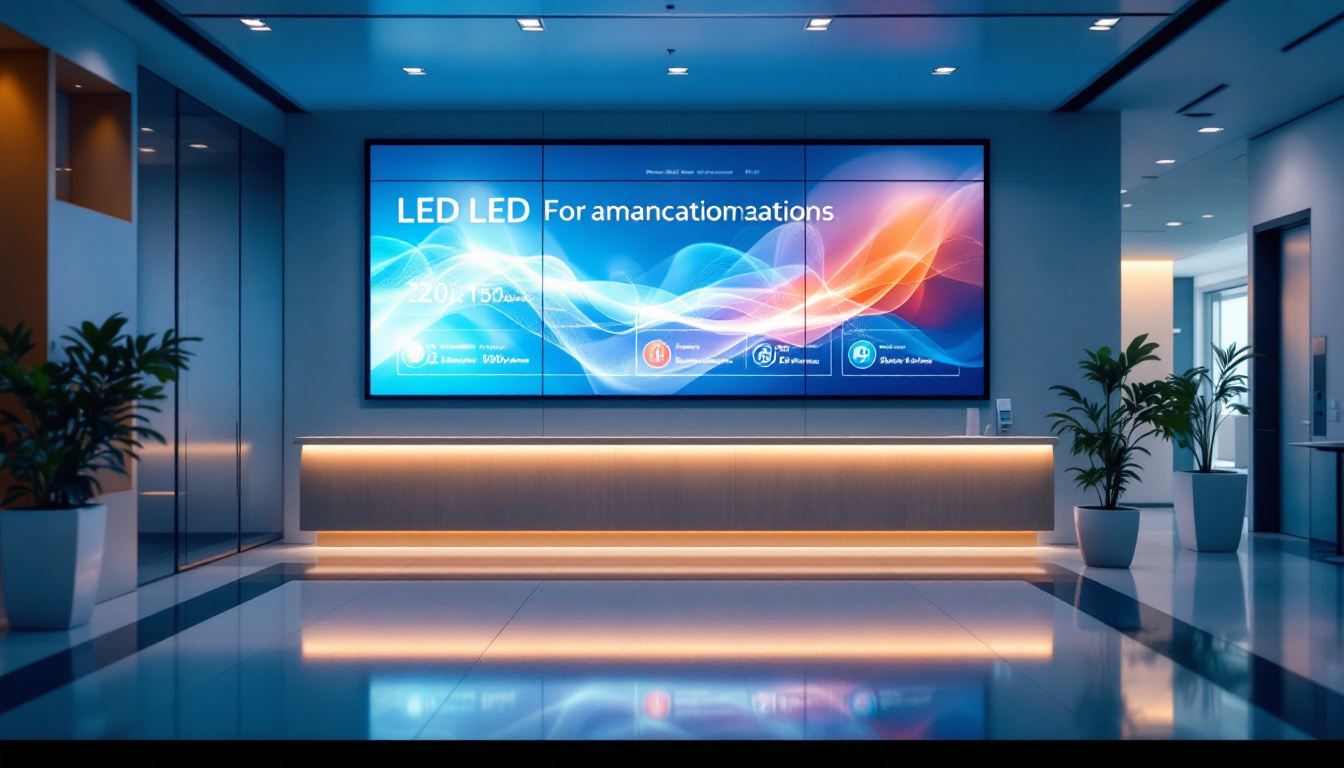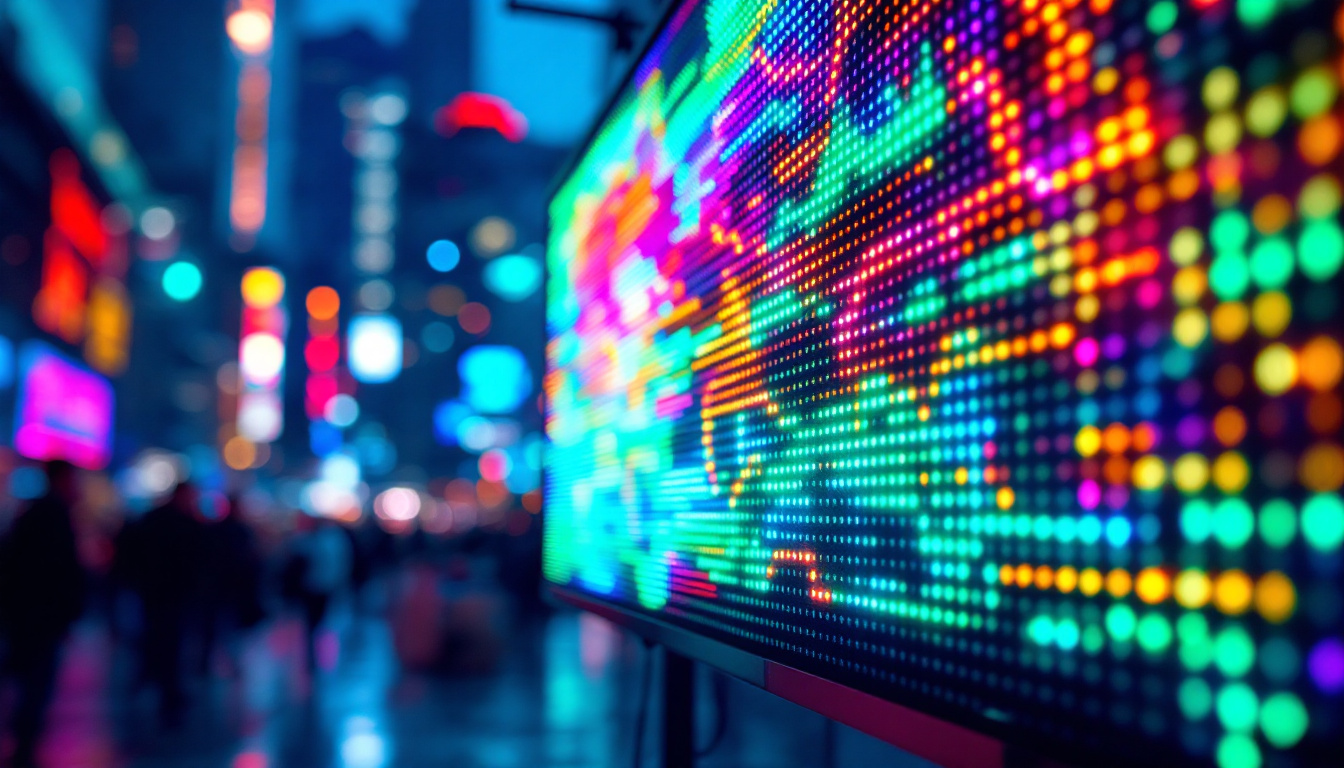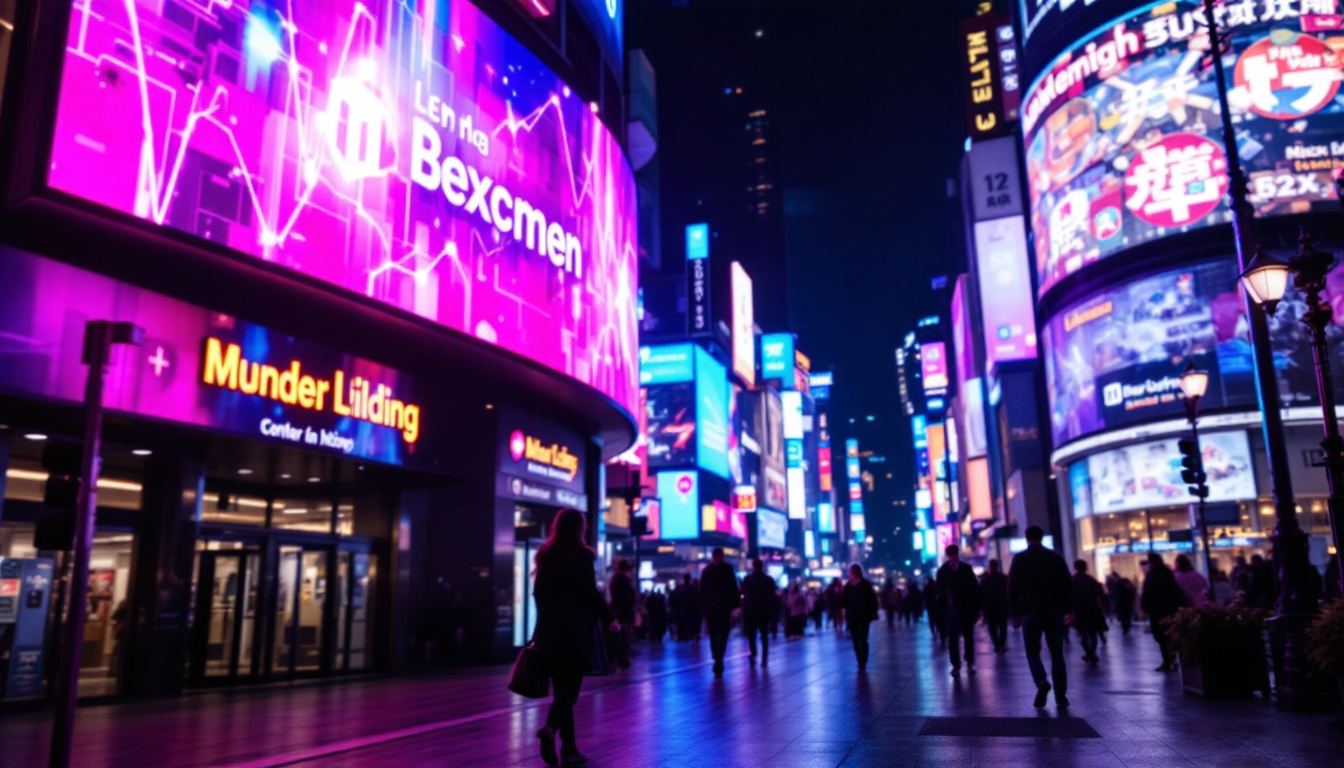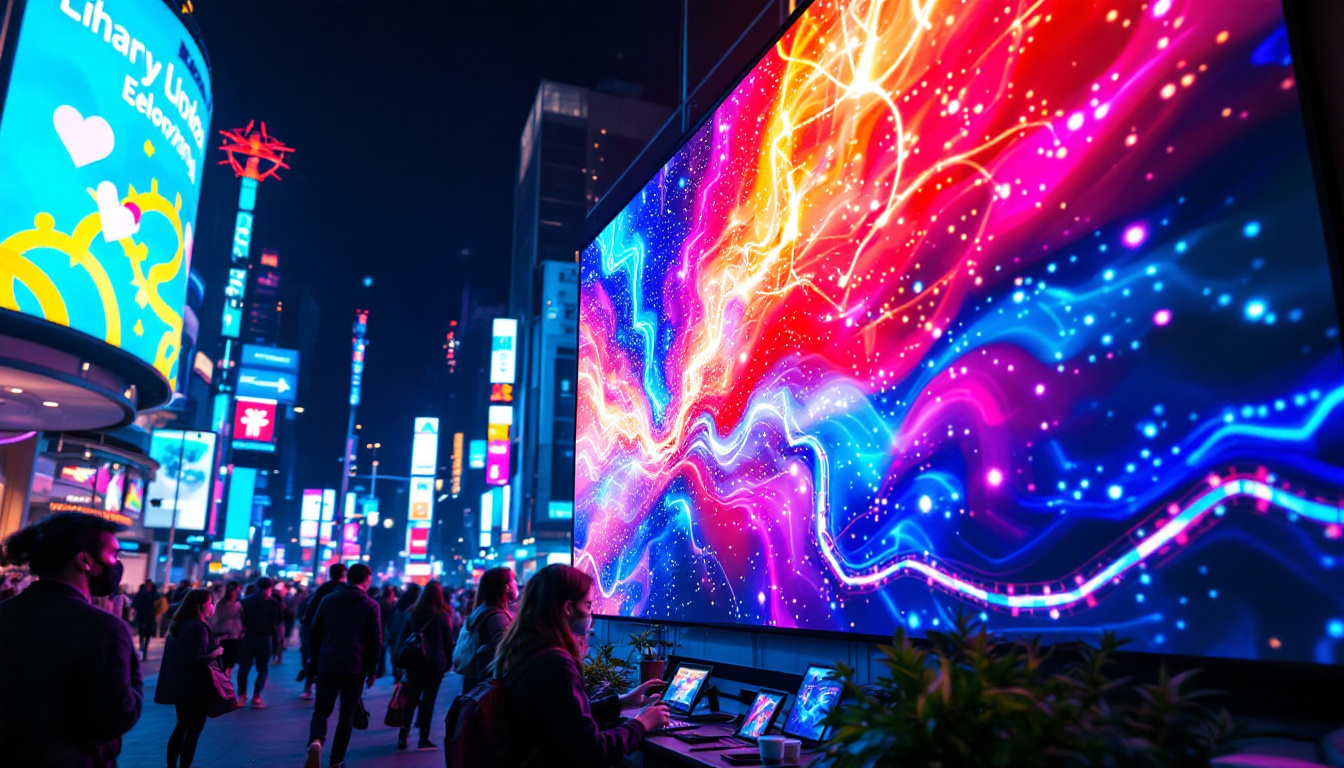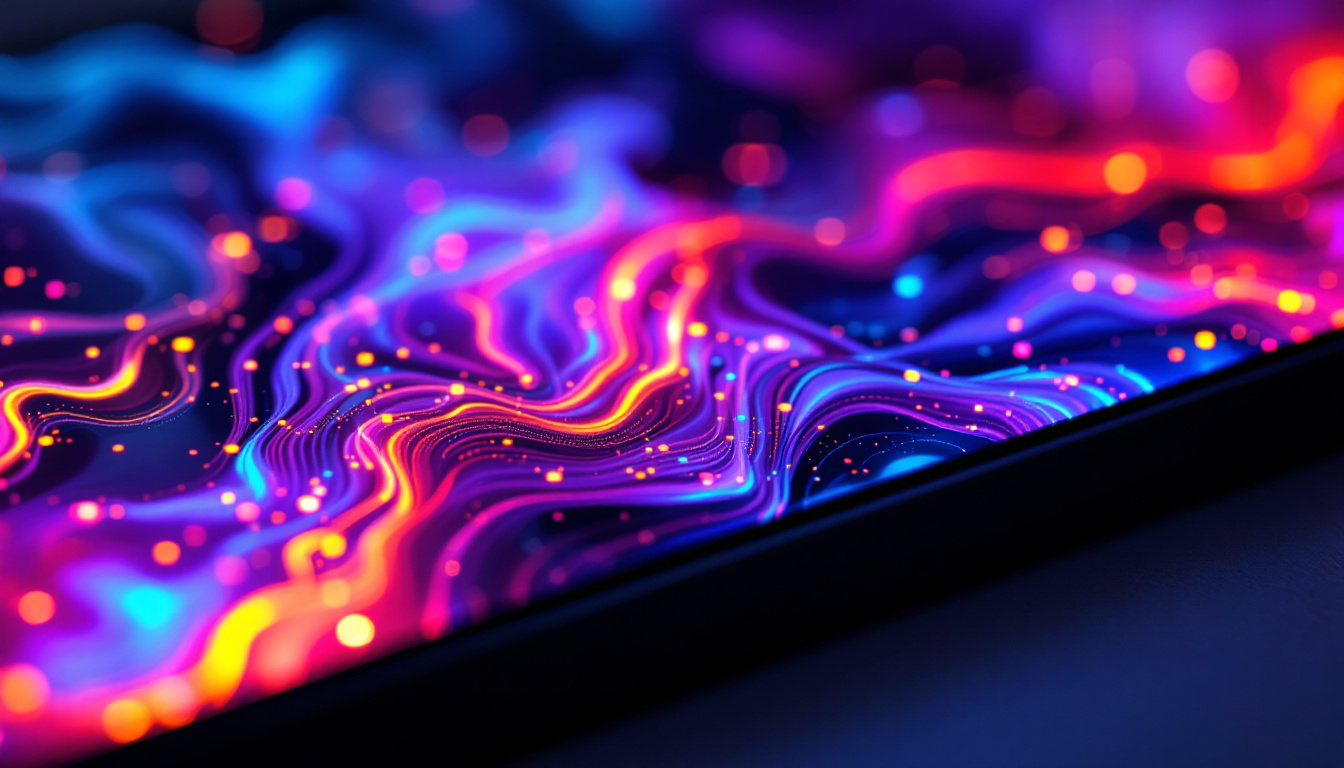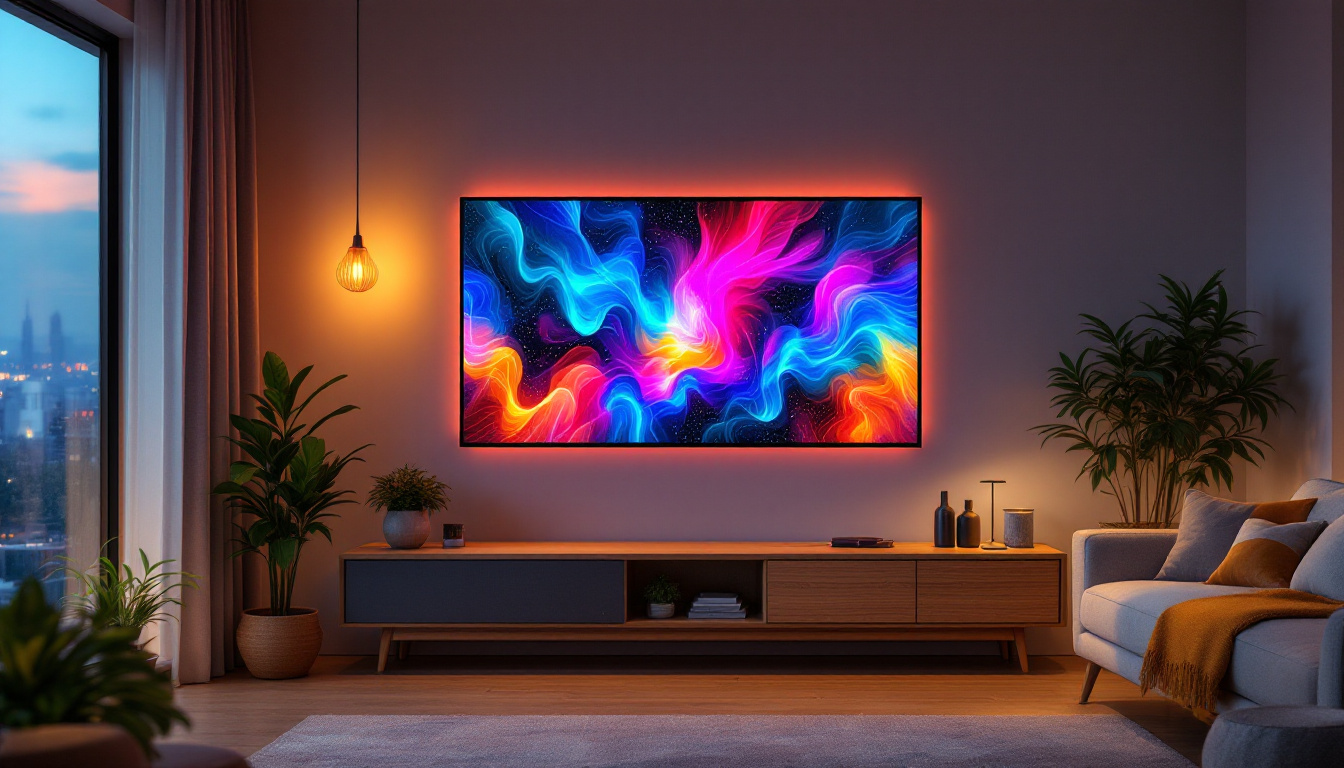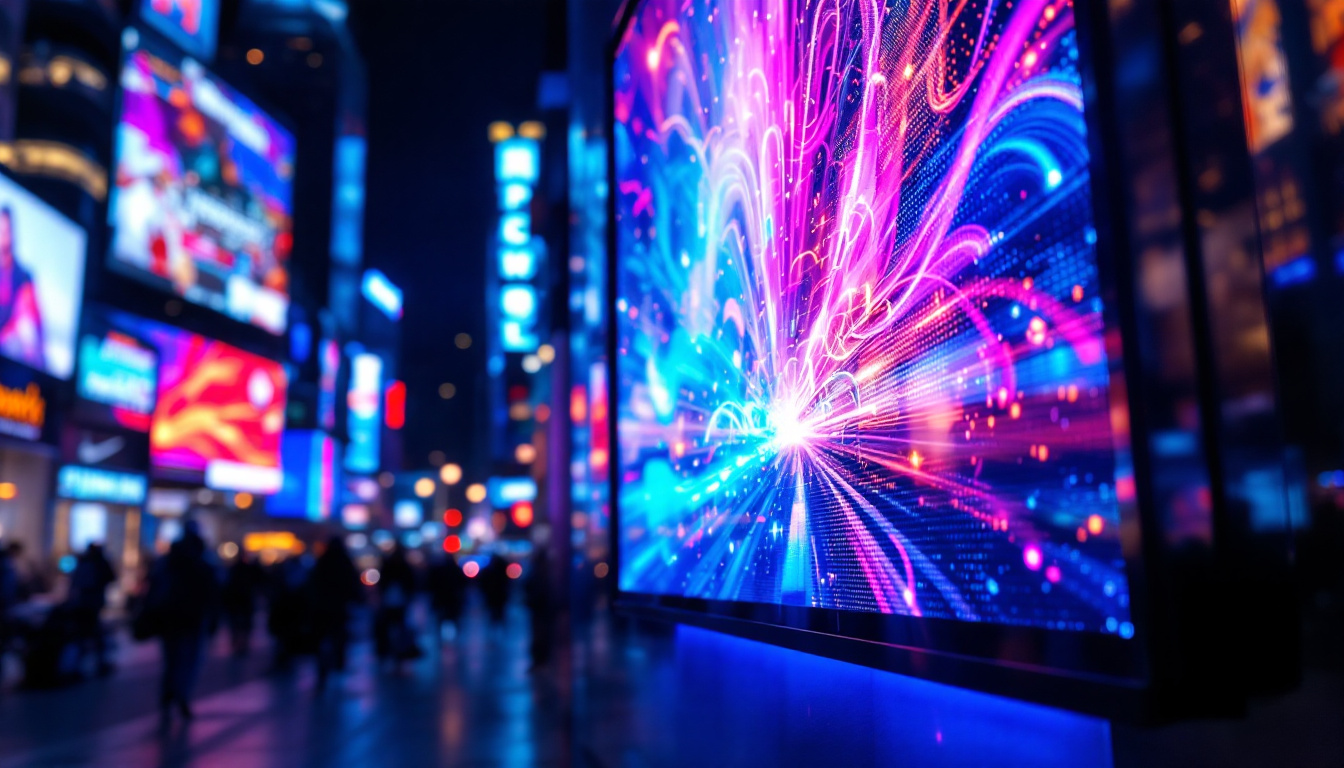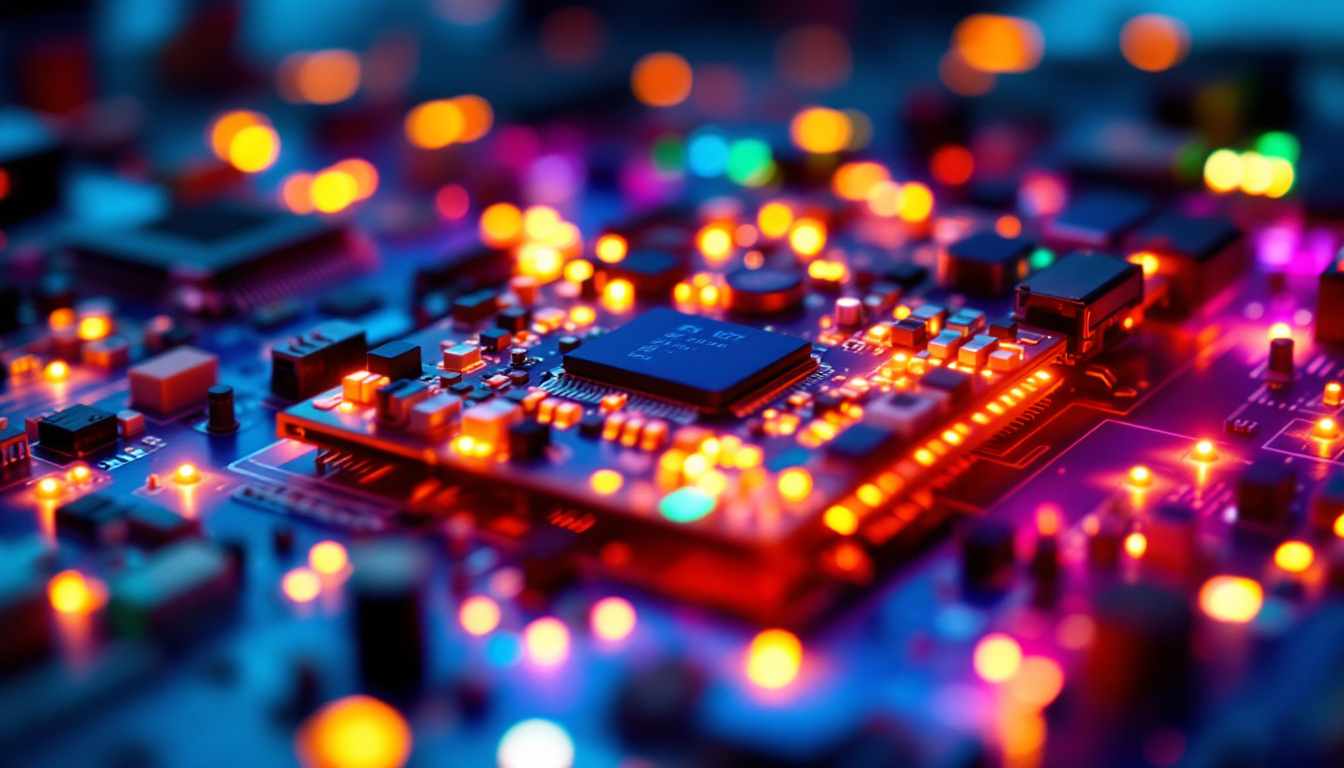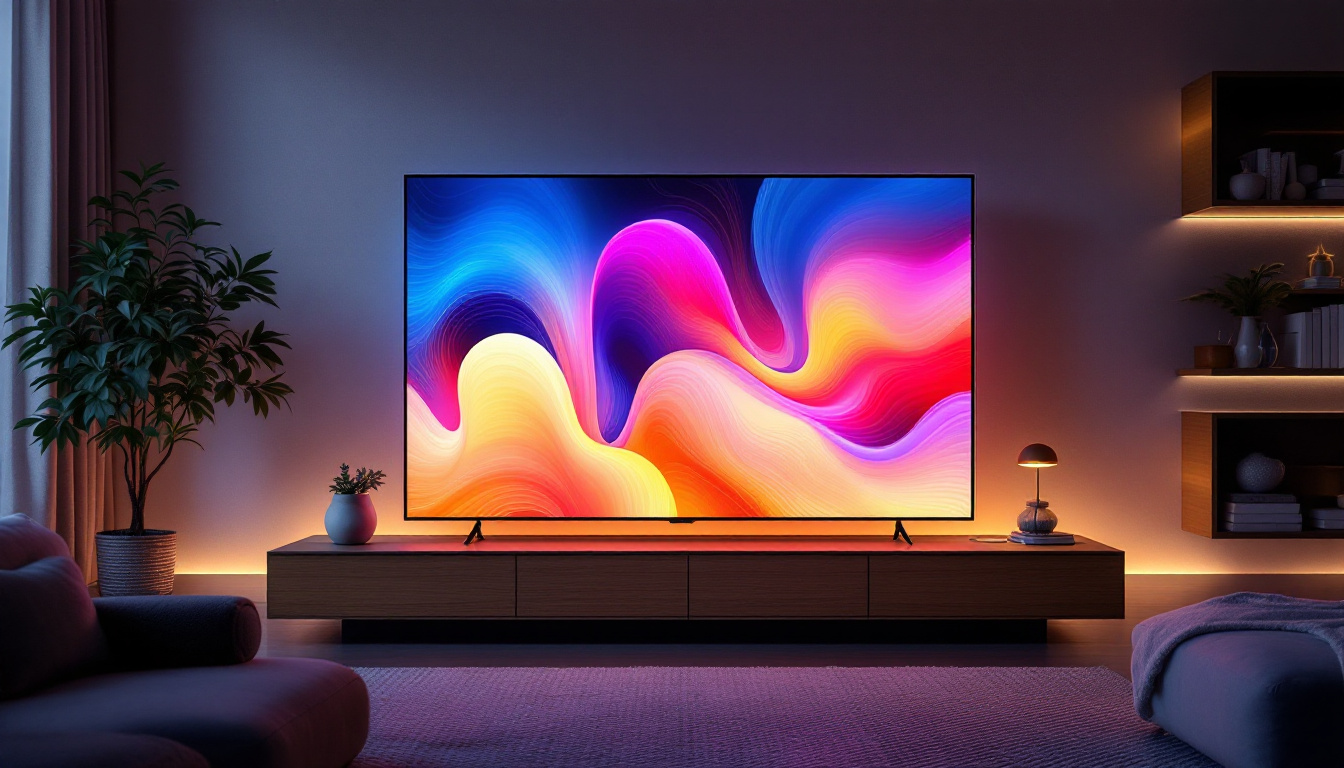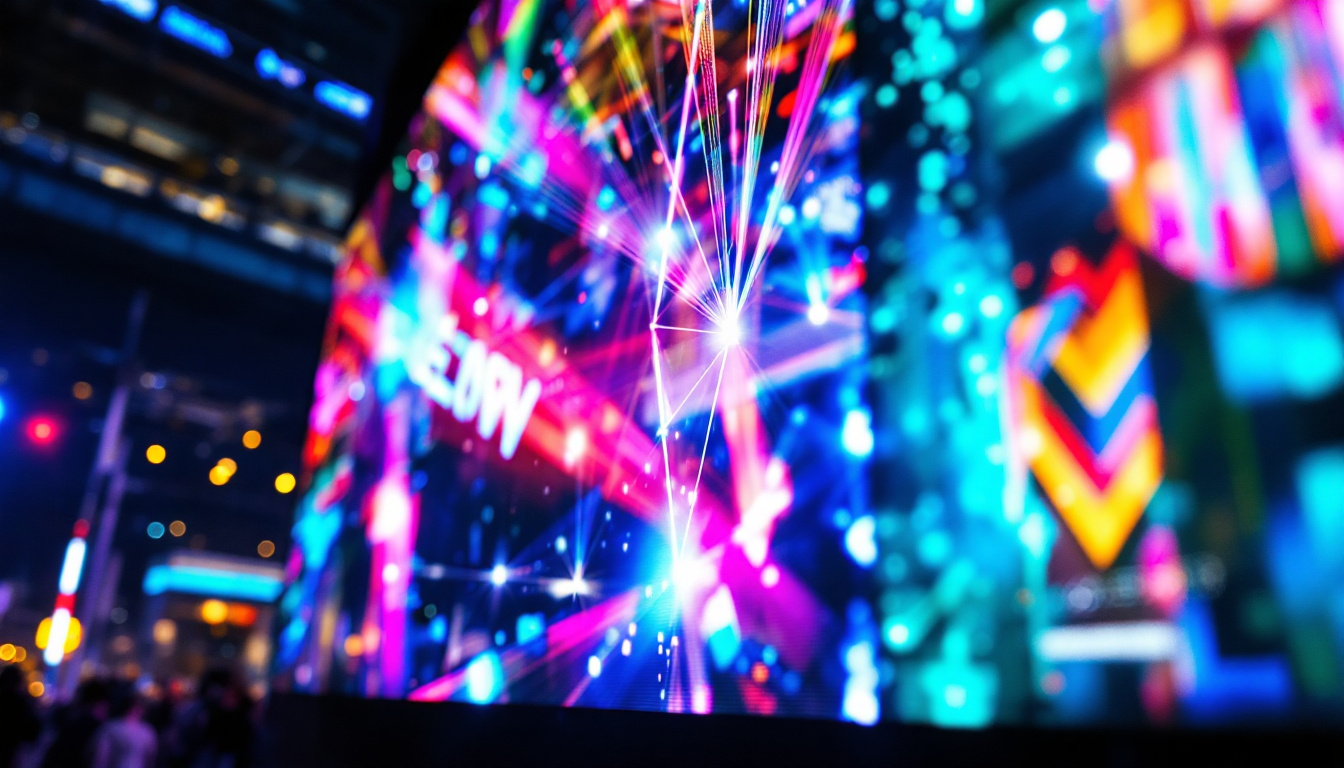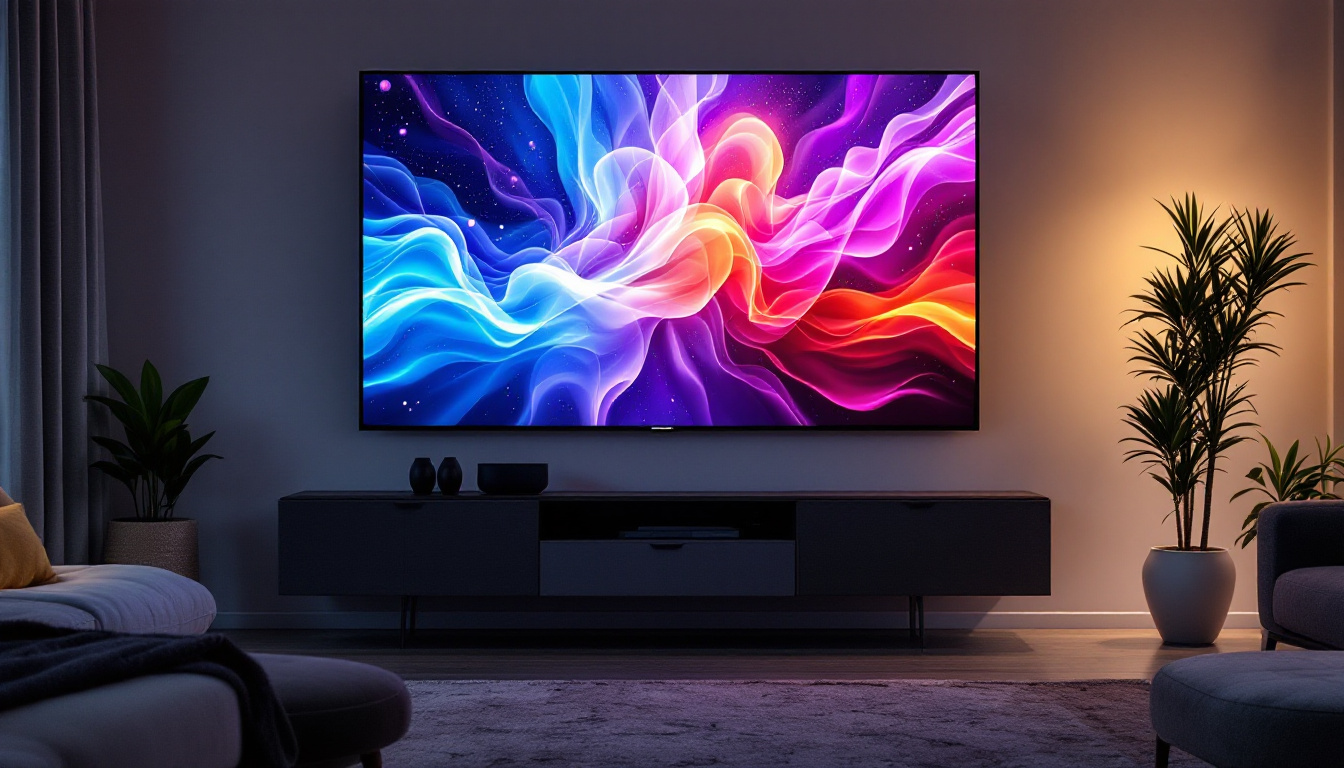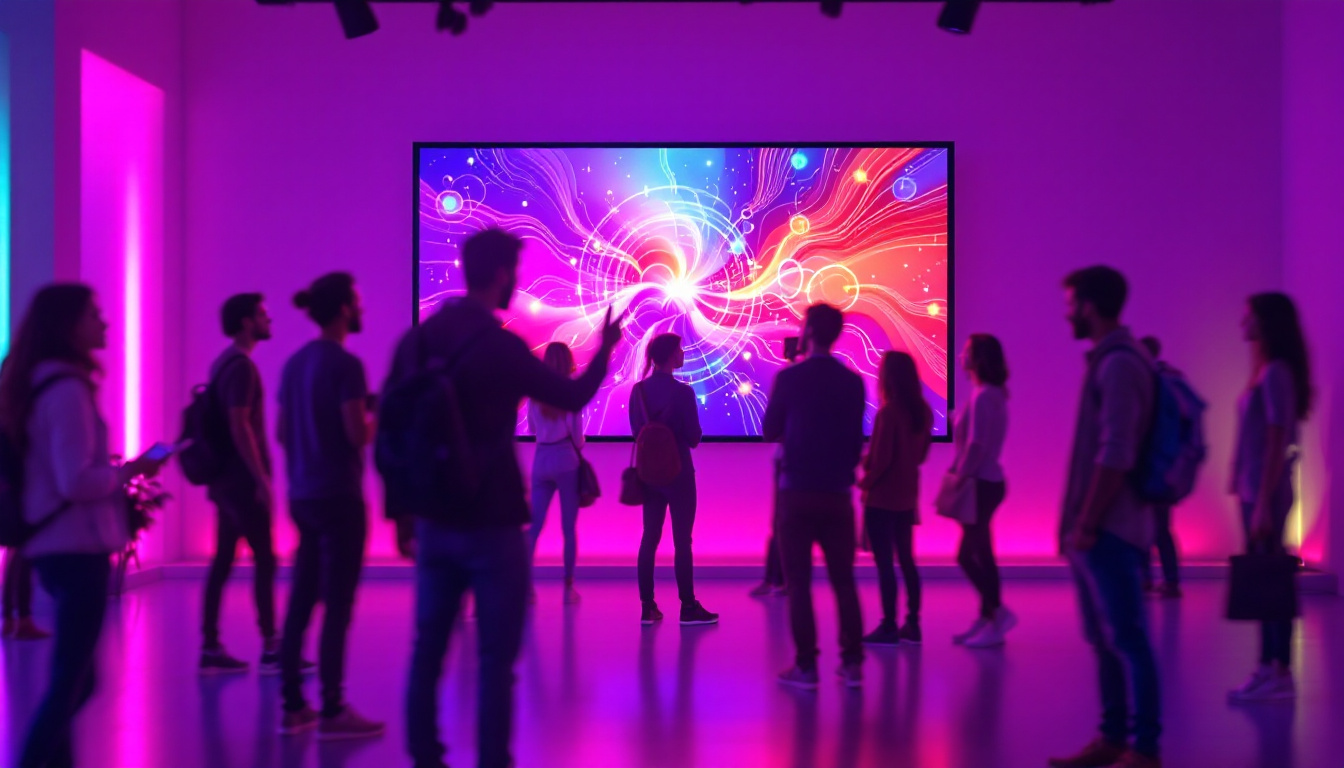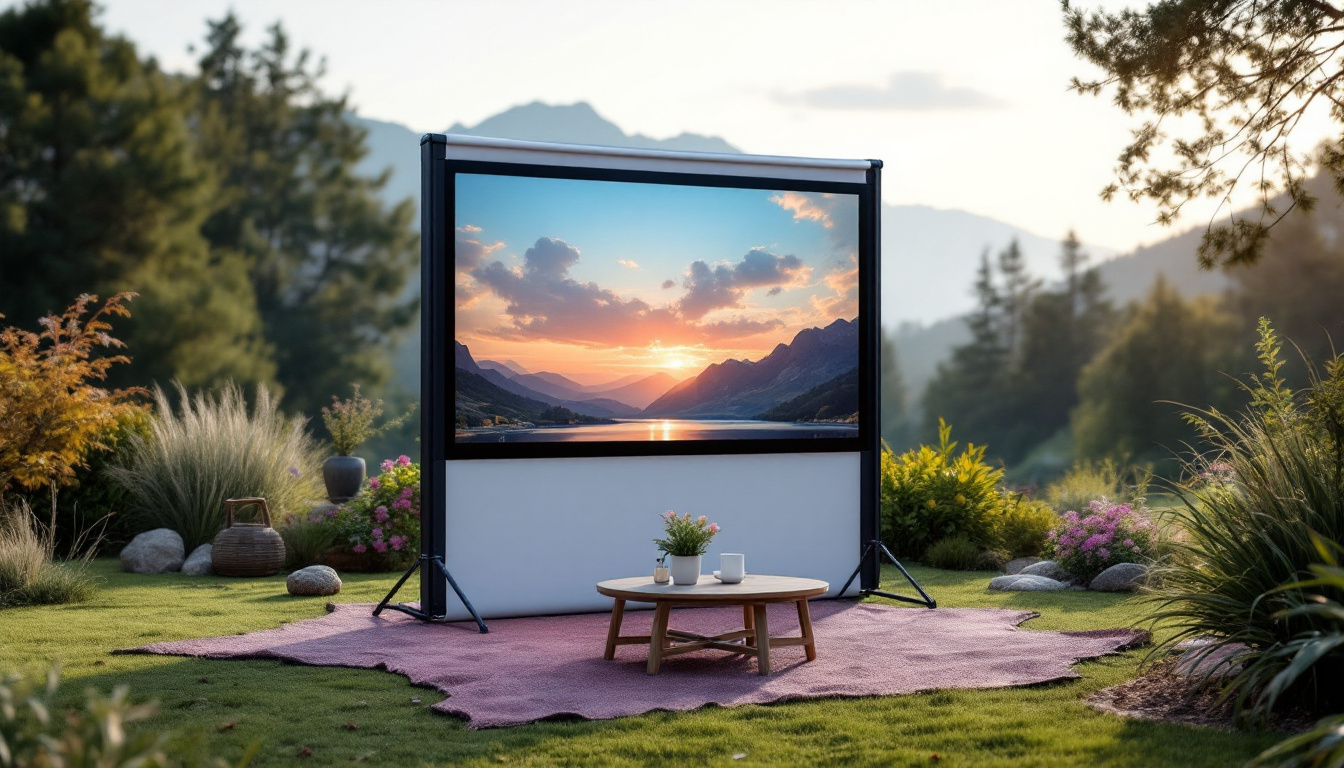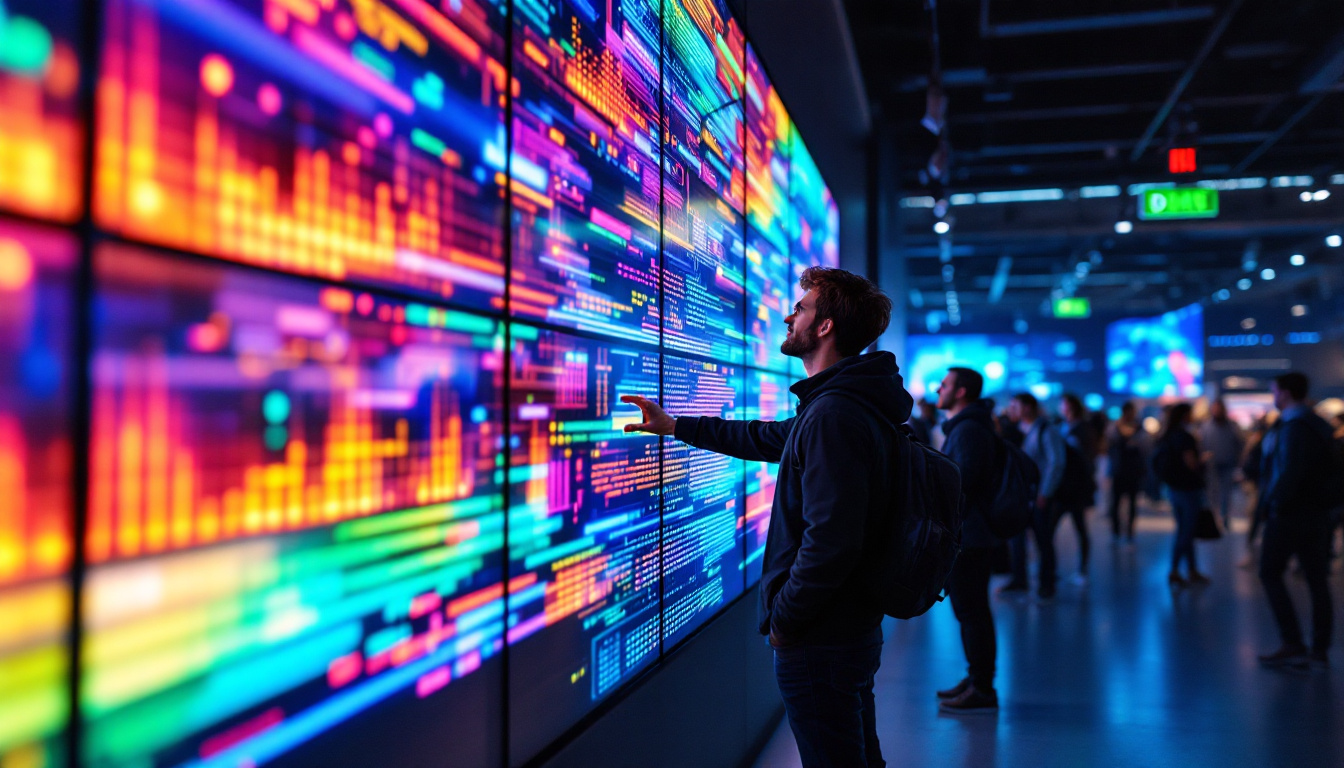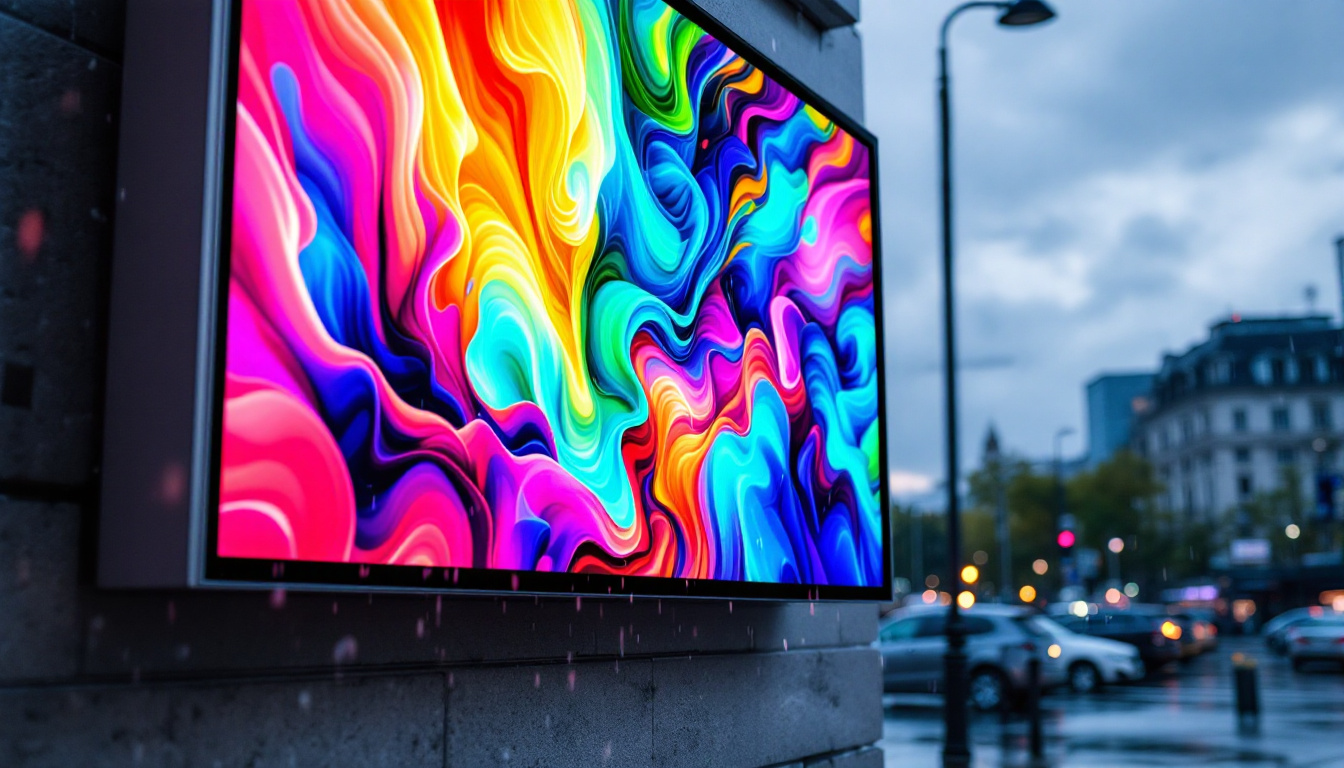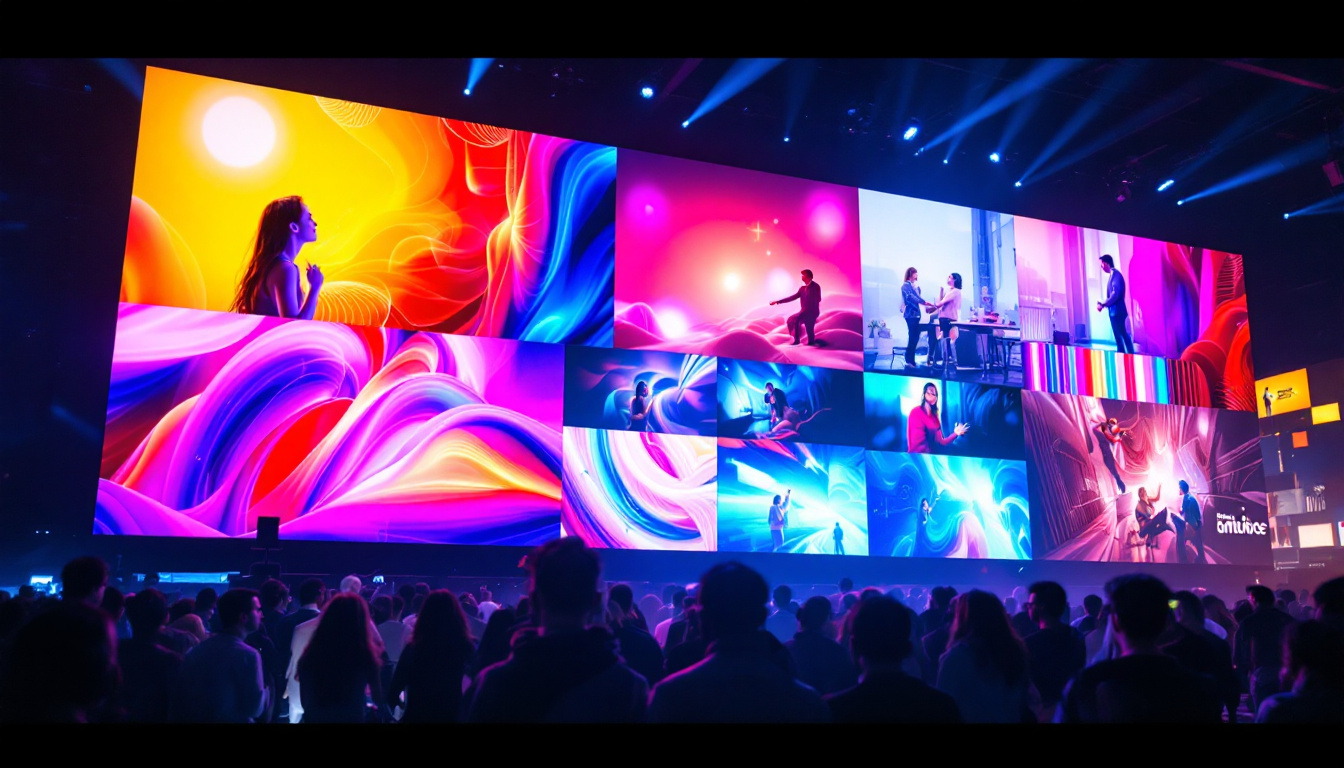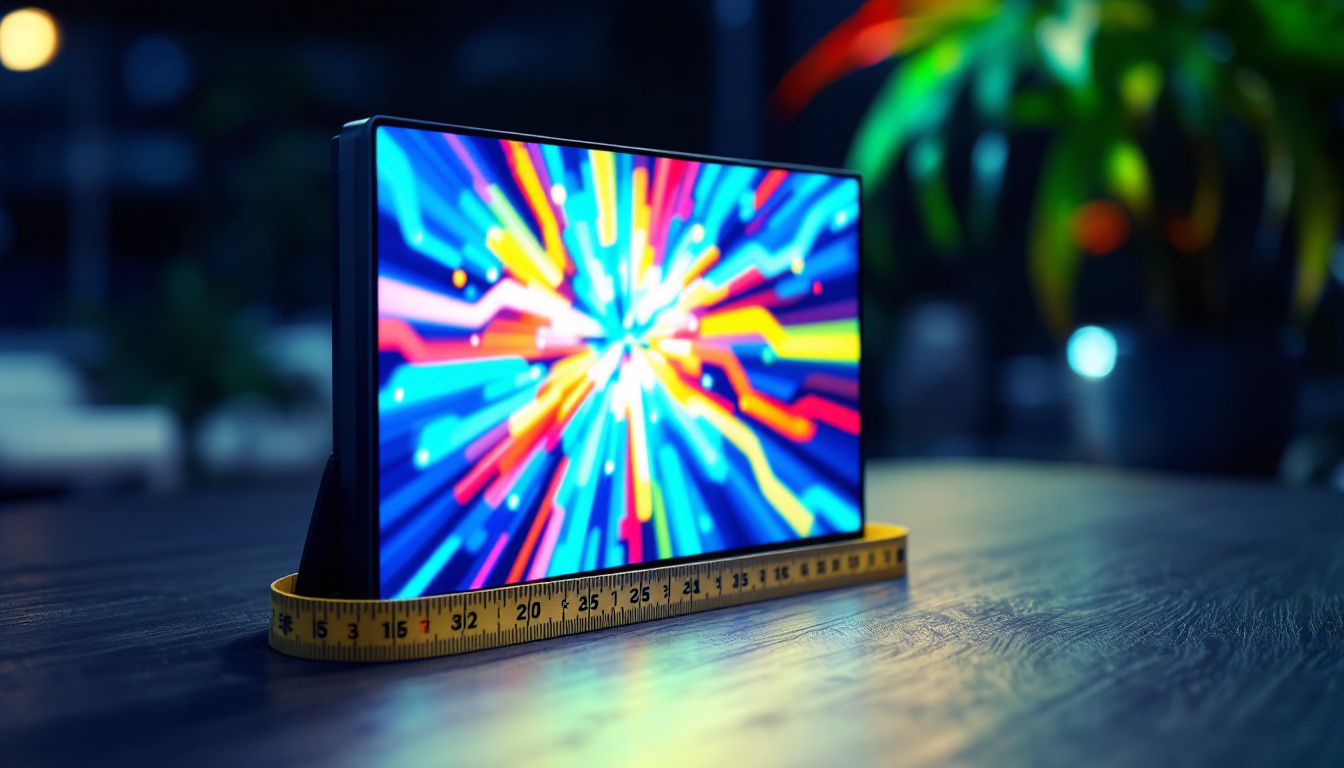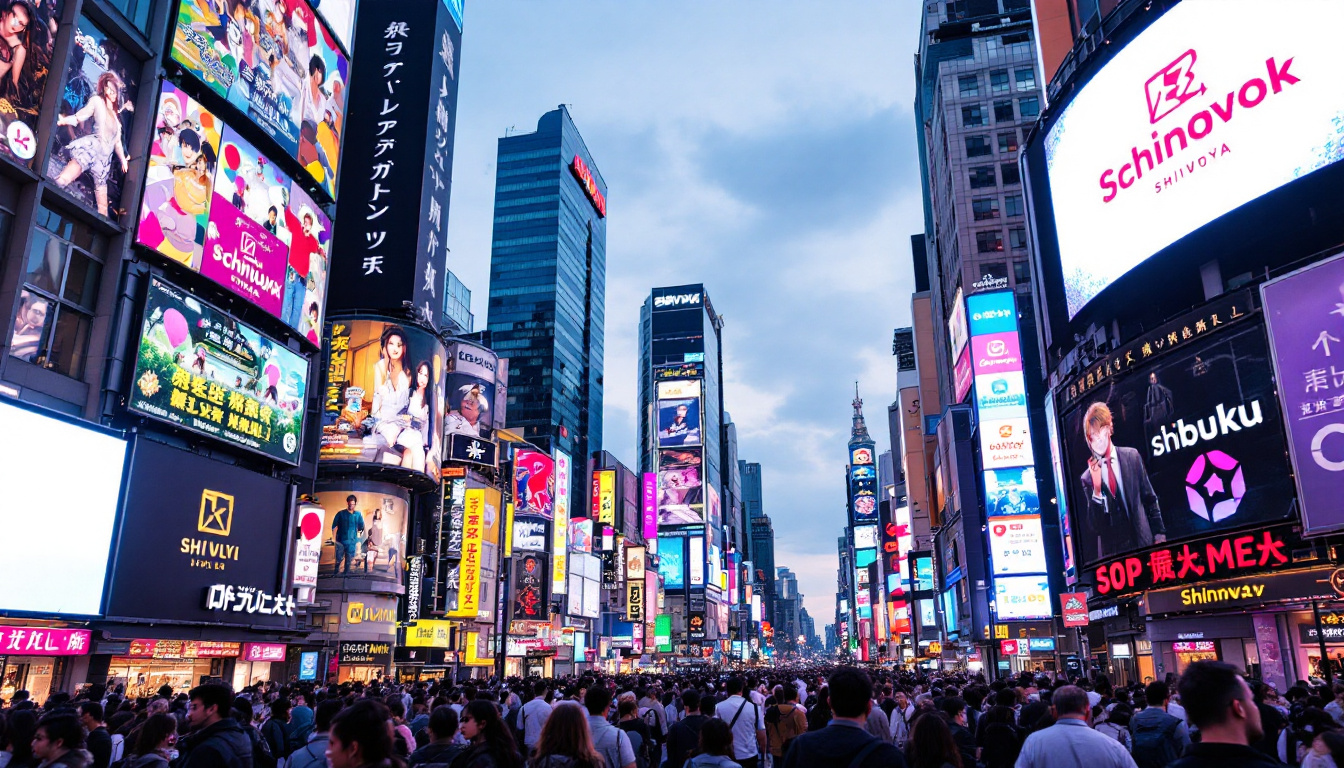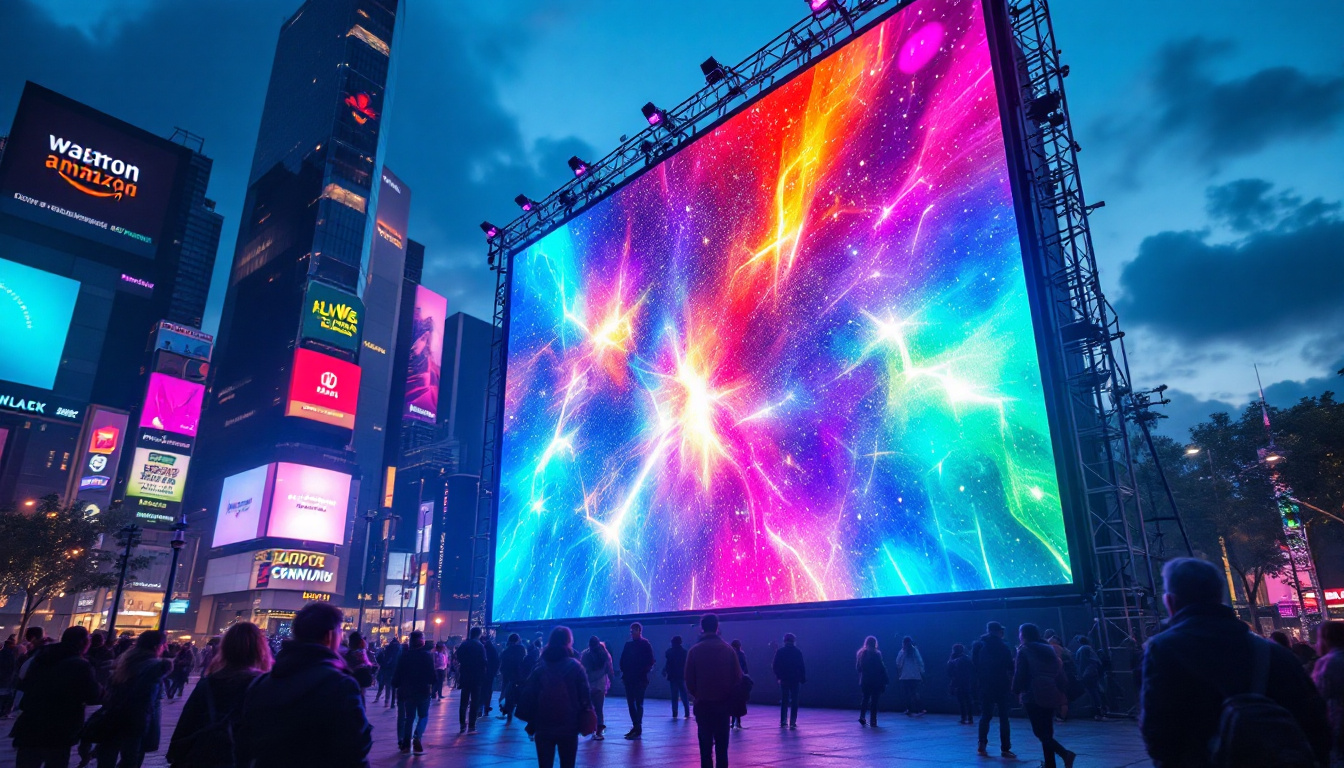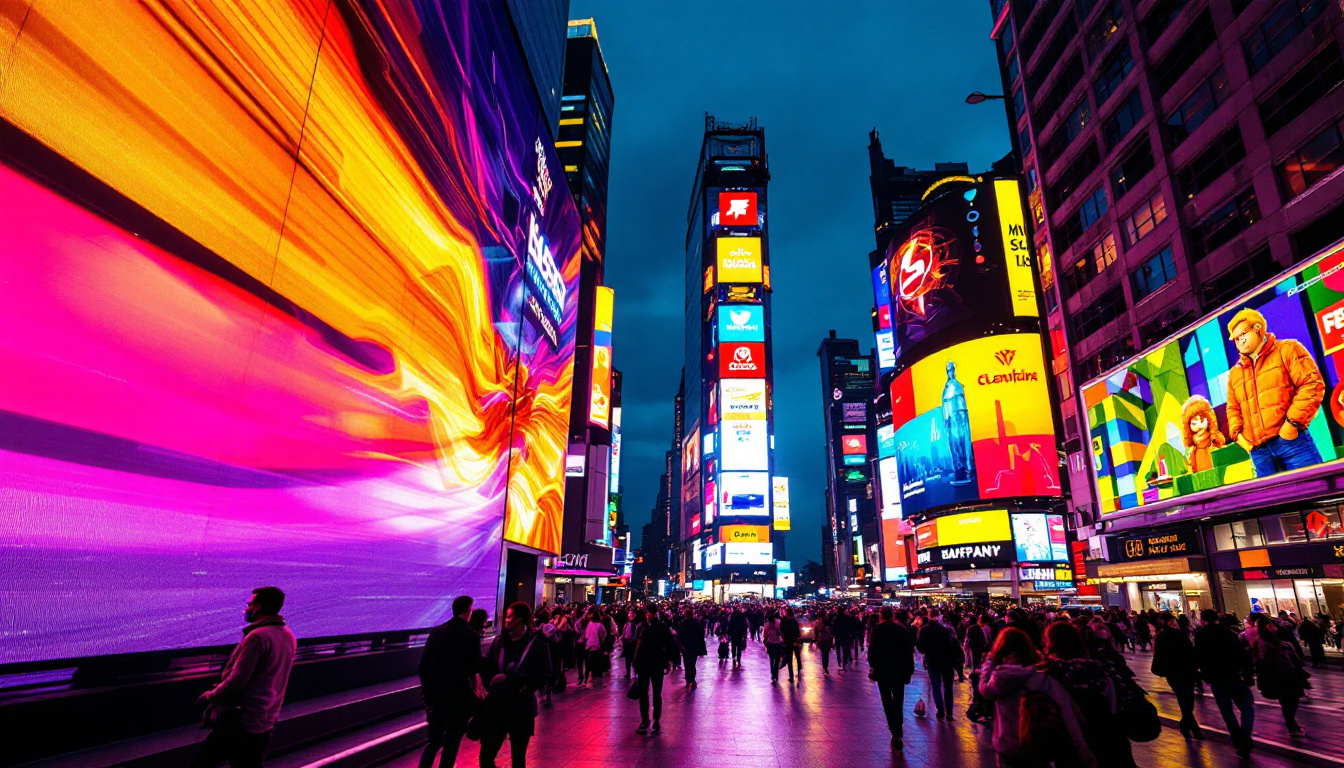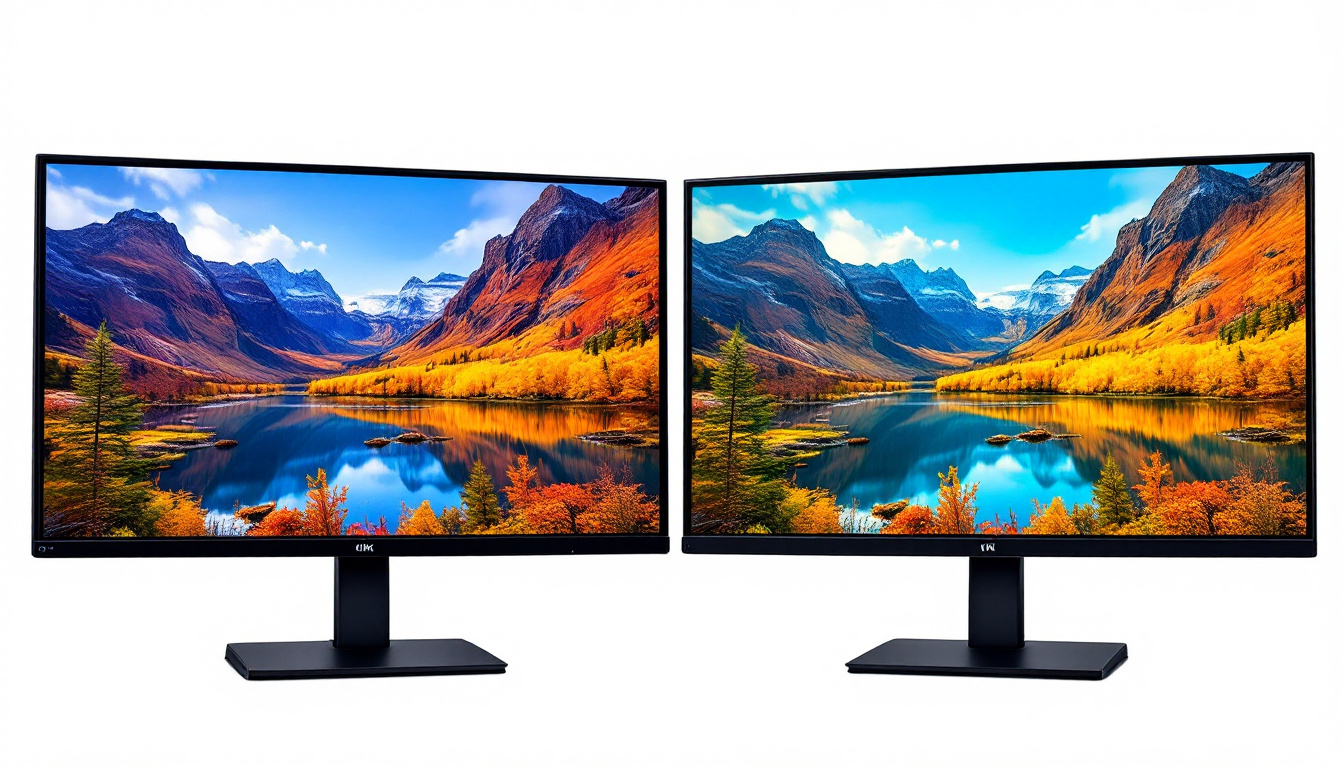In the modern world, where visual communication plays a crucial role in engaging audiences, LED displays have emerged as a transformative technology. These displays are not just about bright lights; they represent a convergence of innovation, design, and functionality. This article delves into the intricacies of LED displays, exploring their technology, applications, and the advantages they offer across various sectors.
Understanding LED Technology
Light Emitting Diodes (LEDs) are semiconductor devices that emit light when an electric current passes through them. The technology behind LEDs has evolved significantly, leading to the development of various types of LED displays. Understanding how these displays work is essential for appreciating their capabilities and applications.
How LED Displays Work
LED displays consist of an array of tiny LED lights that can be individually controlled to create images and videos. The basic principle involves combining red, green, and blue (RGB) LEDs to produce a full spectrum of colors. By adjusting the intensity of each color, the display can render vibrant images and dynamic content.
The arrangement of these LEDs can vary, leading to different types of displays such as direct view, backlit, and organic LED (OLED) screens. Each type has its unique characteristics, making them suitable for different applications. For instance, OLED displays are known for their exceptional color accuracy and deep blacks, as each pixel emits its own light without the need for a backlight. This results in a more energy-efficient display that can also be made thinner and more flexible than traditional LED displays.
Types of LED Displays
There are several types of LED displays, each designed for specific use cases. The most common types include:
- Indoor LED Displays: These are typically used in venues such as theaters, shopping malls, and conference rooms. They offer high resolution and vibrant colors, making them ideal for close viewing.
- Outdoor LED Displays: Built to withstand harsh weather conditions, outdoor displays are often used for billboards and large advertising screens. They are designed to be visible in bright sunlight and have a lower resolution compared to indoor displays.
- Transparent LED Displays: These innovative displays allow light to pass through, making them perfect for storefronts and exhibitions where visibility is essential.
In addition to these common types, there are also specialized LED displays such as flexible LED panels that can be bent or shaped to fit unique spaces, and high-definition LED video walls that combine multiple panels for an immersive viewing experience. These advancements have made LED technology a popular choice not only in advertising but also in entertainment, sports arenas, and even art installations. The versatility of LED displays continues to push the boundaries of creativity, allowing for stunning visual experiences that captivate audiences worldwide.
Applications of LED Displays
The versatility of LED displays has led to their adoption across various industries. From advertising to entertainment, the applications are vast and varied.
Advertising and Marketing
One of the most prominent uses of LED displays is in advertising. Businesses leverage these displays to capture attention with dynamic content that can be easily updated. The ability to change messages in real-time allows for targeted marketing strategies, enhancing customer engagement.
Digital billboards, for instance, can showcase multiple advertisements in a single location, maximizing exposure and revenue for advertisers. The vibrant colors and high brightness of LED displays ensure that messages are visible even in challenging lighting conditions. Additionally, the integration of sensors and data analytics can further refine advertising strategies, allowing businesses to tailor content based on audience demographics and behaviors, thus increasing the effectiveness of their campaigns.
Entertainment and Events
In the entertainment industry, LED displays have revolutionized the way audiences experience events. Concerts, sports events, and festivals utilize large LED screens to enhance the visual experience. These displays can showcase live feeds, graphics, and animations, creating an immersive atmosphere.
Moreover, the flexibility of LED technology allows for creative stage designs that can transform a venue. From curved screens to intricate installations, the possibilities are limited only by imagination. The use of LED walls not only enhances the aesthetic appeal but also allows for interactive experiences, where audiences can engage with the content displayed, such as voting on live polls or participating in social media interactions during the event.
Public Information Systems
LED displays are also widely used in public information systems. Airports, train stations, and bus terminals employ LED screens to provide real-time updates on schedules and announcements. The clarity and visibility of these displays ensure that travelers receive timely information, enhancing their overall experience.
Furthermore, municipalities use LED displays for public service announcements, community events, and emergency alerts, making them an essential tool for communication in public spaces. These displays can also serve as platforms for local businesses to promote their services, fostering community engagement and support. In times of crisis, such as natural disasters or public safety threats, LED screens can quickly disseminate critical information to keep the public informed and safe, demonstrating their vital role in urban infrastructure.
Advantages of LED Displays
The adoption of LED displays comes with numerous advantages that make them a preferred choice for various applications. Understanding these benefits can help organizations make informed decisions when investing in display technology.
Energy Efficiency
One of the standout features of LED displays is their energy efficiency. Compared to traditional display technologies, such as LCD and projection systems, LEDs consume significantly less power. This not only reduces operational costs but also aligns with sustainability goals, making them an environmentally friendly option.
Additionally, the long lifespan of LED technology means fewer replacements and less waste, further contributing to its eco-friendly credentials.
High Brightness and Visibility
LED displays are known for their exceptional brightness, making them suitable for both indoor and outdoor environments. The high luminosity ensures that content remains visible even in direct sunlight, a critical factor for outdoor advertising and public information displays.
This capability to deliver clear visuals in various lighting conditions enhances the effectiveness of communication, ensuring that messages reach the intended audience without compromise.
Durability and Reliability
Durability is another significant advantage of LED displays. Built to withstand harsh conditions, outdoor LED screens are resistant to weather elements such as rain, wind, and extreme temperatures. This reliability translates to lower maintenance costs and longer operational periods.
Moreover, the solid-state nature of LEDs makes them less susceptible to damage compared to traditional display technologies, further enhancing their longevity.
Challenges and Considerations
While LED displays offer numerous benefits, there are also challenges and considerations that potential users should be aware of. Understanding these factors can aid in making informed decisions regarding the implementation of LED technology.
Initial Costs
The initial investment for LED displays can be higher than that of traditional display technologies. This upfront cost may deter some organizations from making the switch. However, it is essential to consider the long-term savings associated with energy efficiency and reduced maintenance costs.
Many organizations find that the return on investment (ROI) justifies the initial expenditure, particularly when considering the enhanced visibility and engagement that LED displays provide.
Technical Expertise
Implementing LED display technology often requires a certain level of technical expertise. Organizations may need to invest in training for staff or hire specialized professionals to manage installation and maintenance. This requirement can add to the overall cost and complexity of the project.
However, many display manufacturers offer support and resources to assist organizations in navigating these challenges, ensuring a smoother transition to LED technology.
Content Management
Effective content management is crucial for maximizing the impact of LED displays. Organizations need to develop strategies for creating and updating content regularly to keep audiences engaged. This may involve dedicating resources to content creation and management, which can be a challenge for smaller organizations.
Investing in user-friendly content management systems can alleviate some of these challenges, allowing for easier updates and more dynamic content delivery.
The Future of LED Displays
The future of LED displays looks promising, with ongoing advancements in technology and design. As manufacturers continue to innovate, new possibilities are emerging that will further enhance the capabilities of LED displays.
Advancements in Technology
Future developments in LED technology may include improvements in resolution, color accuracy, and energy efficiency. Innovations such as microLED and miniLED technologies promise to deliver even higher-quality visuals while maintaining the energy-efficient characteristics of traditional LEDs.
These advancements will open new avenues for applications in various fields, including virtual reality, augmented reality, and interactive displays, further expanding the potential of LED technology.
Integration with Smart Technologies
As smart technologies continue to gain traction, the integration of LED displays with IoT (Internet of Things) systems is becoming increasingly feasible. This integration will enable real-time data sharing and dynamic content updates based on audience behavior and environmental conditions.
Such capabilities will enhance the effectiveness of advertising and public information systems, allowing for more personalized and relevant content delivery.
Environmental Considerations
With growing awareness of environmental sustainability, the future of LED displays will likely focus on eco-friendly practices. Manufacturers are already exploring ways to reduce the carbon footprint of production and improve recycling processes for outdated displays.
As consumers become more environmentally conscious, organizations that prioritize sustainability in their display technology will likely gain a competitive edge.
Conclusion
LED displays have revolutionized the way information is communicated visually, offering unparalleled brightness, energy efficiency, and versatility. As technology continues to advance, the applications and benefits of LED displays are expected to expand even further.
Organizations looking to enhance their communication strategies should consider the potential of LED displays, weighing the initial costs against the long-term advantages. With careful planning and execution, LED technology can serve as a powerful tool for engaging audiences and delivering impactful messages.
In a world increasingly driven by visual content, embracing LED displays is not just a trend; it is a strategic move towards effective communication in the digital age.
Discover LumenMatrix’s Innovative LED Solutions
Ready to elevate your visual communication strategy with cutting-edge LED technology? Look no further than LumenMatrix, a pioneer in crafting LED display modules that bring your brand to life. From vibrant Indoor and Outdoor LED Wall Displays to dynamic Vehicle and Sports LED Displays, LumenMatrix offers a comprehensive range of solutions tailored to your needs. Experience the future of digital signage with our All-in-One LED Displays, LED Posters, and revolutionary Transparent LED Displays. Embrace the power of LumenMatrix to create unforgettable visual experiences and connect with your audience like never before. Check out LumenMatrix LED Display Solutions today and transform the way you communicate.

